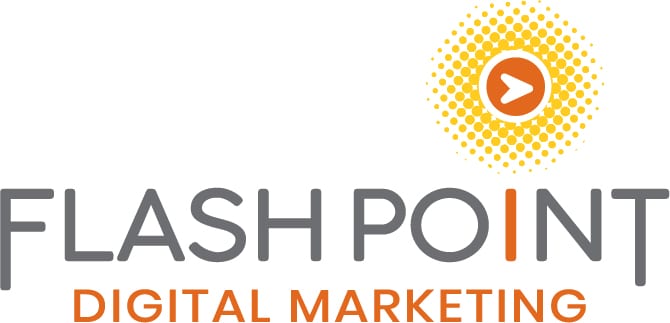SEO Guides, Tips & More!
Learn from Our Experience
How to Qualify Outbound Links and Comply with Google’s Webmaster Guidelines
Google uses links to determine a site’s relative value and authority, and quality links can go a long way in improving a site’s SEO. Link-based analysis helps Google target search results better and improve user experience; link quality and quantity – when done right – is extremely beneficial for a site.
Spammy or low-quality links have the opposite effect. Those types of links violate Google’s quality guidelines and can result in a site losing its ranking, among other negative consequences.
Understanding the best practices in building an effective link strategy and how to properly tag paid links will help marketers and site owners avoid spam warnings and create dynamic, valuable content.
Link Strategy
A link strategy can be both inbound and outbound, either directing site visitors to other pages on the site or to external websites. Most websites use both, and for good reasons. Effective link strategies help to lower a site’s bounce rate and keep visitors browsing content longer. More time on site means more engagement, and more engagement means better conversions.
Inbound links, or backlinks, occur when another site links back to the native website’s content. Inbound links do a great deal to help build a site’s credibility, improve Google search rankings and web traffic, and generally increase SEO.
Don’t confuse inbound links with internal links; one directs site visitors from another website. The other links together internal pages within the site itself. Both are valuable but they are not the same.
Outbound links are the opposite and point to other sites. They add authority and context to a site’s content and provide more value to a site’s visitors, especially for complex topics. Outbound links also help a site demonstrate its EAT: expertise, authority, and trustworthiness.
As Google’s algorithms have evolved, their ranking system penalizes spammy link practices the same way it devalues keyword stuffing. Too much of a good thing can quickly become bad when it’s blatantly obvious to the reader, and to Google.
For example, if an accounting firm wanted to direct site visitors to a PDF download of gated content, the borderline spammy link strategy might look like this:
Download our guide to the help real estate investors optimize the 1031 exchange for tax savings.
The URL would be almost a mirror image of the hyperlinked text: site.com/real-estate-investors-optimize-1031-exchange-tax-savings.
The link is too long and basically stuffs keywords for the sake of over-optimizing the URL.
This would be an example of a link that violates Google’s quality guidelines.

Link Schemes
A link strategy that either intentionally or accidentally manipulates a site’s page rank or SEO is a link scheme. Link schemes can involve both inbound and outbound links. It goes against Google’s Webmaster Guidelines and will result in the exact opposite of what a site is trying to achieve: lower ranking.
Link schemes come in several varieties, such as:
- Buying or selling links to influence page rank or site authority
- Gratuitous link exchanges without regard to authoritativeness or trustworthiness
- Large-scale guest posts or article marketing with keyword dense links (like the one example outlined earlier)
- Automated link-building programs
- Setting requirements for links as part of terms of an agreement or another contract
There are a few other ways that link schemes can appear more subtly on a website. These unnatural links, as Google refers to them, might appear stuffed in the header or footer of a website, low-quality bookmark or directory links, overly optimized links on other websites or in discussion forums, or any text ads or advertising that pass, influence, or otherwise manipulate page rank.
Commercial Links
Outbound links that involve payment or sponsorship are inherently fine; however, commercial links also require a site or content owner to be aware of some key responsibilities and guidelines. Adding appropriate rel tags, or relationship tags, to commercial links informs Google of the relationship between sites.
Especially as influencer marketing occupies a bigger piece of marketing budgets, rel tags are something that marketers must become familiar with.
In HTML, the rel tag placement would look like this:
<a rel=”sponsored” href=https://mysite.com/my-page”>


Link source: Google Search Central
Affiliate links, when a site may receive a commission or other type of payment for directing readers to a specific source, should be qualified. In Google’s terms, this means adding HTML language rel=”sponsored” to the link. Whether the affiliate link is added manually or dynamically, site owners are still responsible for adding the appropriate marker to help Google identify the link as a high-quality paid advertisement.
The rel=”sponsored” tag can also be used in sponsored and guest posts.

Link source: Google Search Central
Sponsored and guest posts, either written for money or exposure, also need to be qualified. Sponsored posts, like affiliate links, are fine and can be a great way for both parties to benefit. To avoid violating Google’s standards, site and content owners must apply the rel=”sponsored” tag to paid links within sponsored or guests posts.
Within post comments and discussion forums, paid links can still be added that comply with Google’s terms. To do that, simply add the appropriate tag.
To avoid comment spam for commercial links, the user-generator content (UGC) tag is best. It looks like this:
<a rel=”ugc” href=”https://mysite.com/my-page”>
There’s also the option to tell Google that a certain type of commercial link shouldn’t be associated with the site. To remove the relationship between two sites and to avoid Google indexing one site with another based on link attributes, add the rel=”nofollow” tag.
In HTML, the tag placement looks like:
<a rel=”nofollow” href=”https://mysite.com/my-page”>
Links with the rel tag generally will not be followed, but the linked pages can still be found in sitemaps or in links from other sites. In other words, it’s not failproof. But taking these steps does help to protect the site and its content.
Google Webmaster Guidelines and Link Strategy
Most marketers don’t get too involved in Google’s Webmaster Guidelines because it mostly concerns coding. There are several elements of the guidelines that are useful to know about, though.
Generally, qualifying outbound links – like adding appropriate rel tags – and simple URL structures are two areas that marketers can influence or possibly even control. Avoiding thin, scraped, duplicate, automatically generated, or otherwise, low-value content are also areas where marketers can get involved.
- At a basic level, know where the site is linking to. Carefully evaluate outbound links according to the EAT guidelines and choose sites that can boost the reputation of your own.
- Outbound links should look organic and flow naturally within the content. If something seems to jump out to the reader as abrupt or unnatural, it needs to be flagged for review.
- Keep URL structures simple and avoid keyword stuffing or matching the URL to the hyperlinked text.
- It’s a good idea to run an audit of the site for any technical or SEO errors. SEMRush has a tool that can let marketers see which links have the rel=“nofollow” tag. It’s free but requires registration.
- Flashpoint offers a free site crawl, which can scan for duplicate or missing content, missing or invalid tags, and other common SEO issues. Find out more here.
Because great links usually go in hand with great content, the best thing marketers can do is ensure their sites publish authentic, organic content that’s valuable to readers. Focus on the user experience and curate outbound links that make sense for the topic being discussed.
For technical questions on qualifying links and how to build an effective SEO link strategy, reach out to the SEO experts at Flashpoint anytime.

